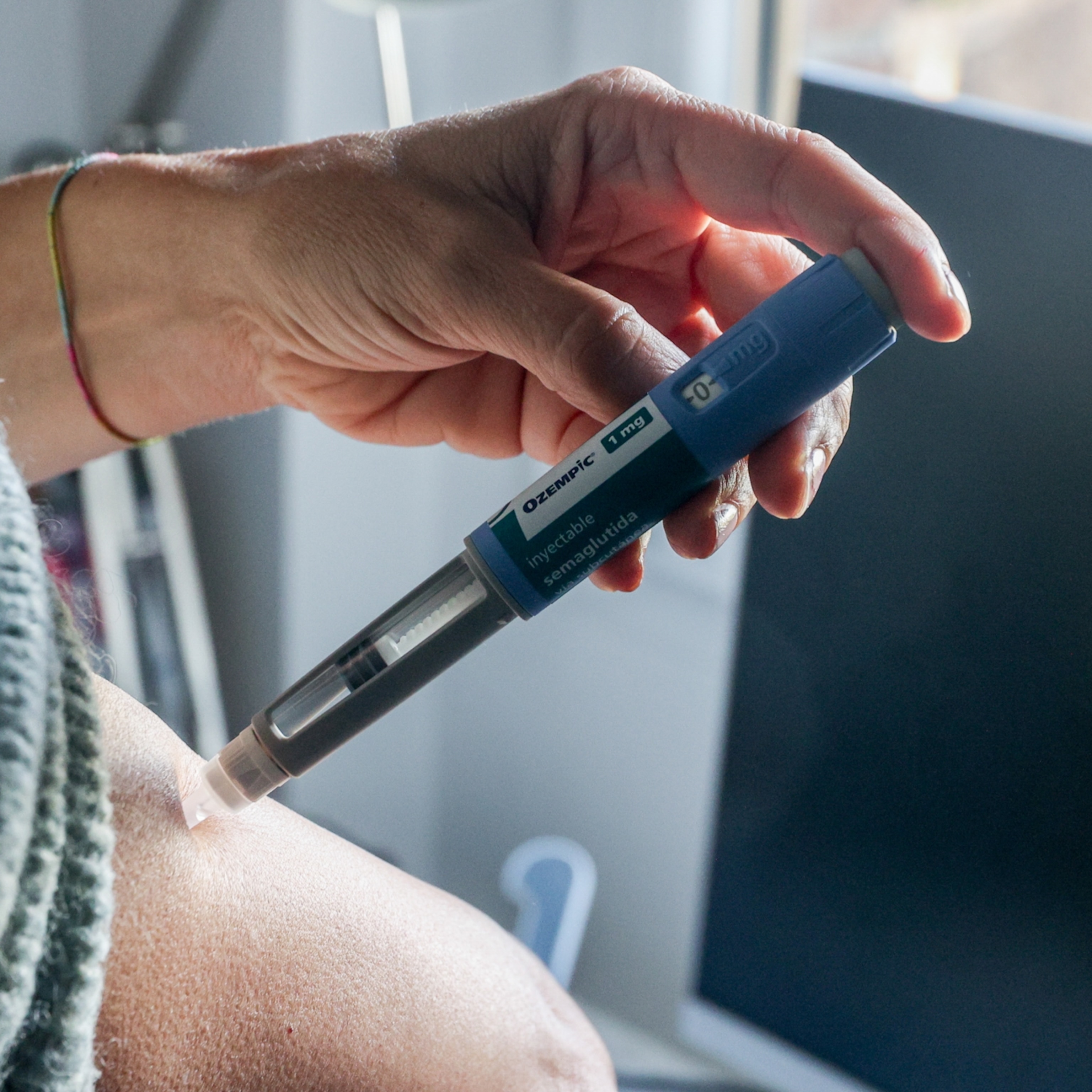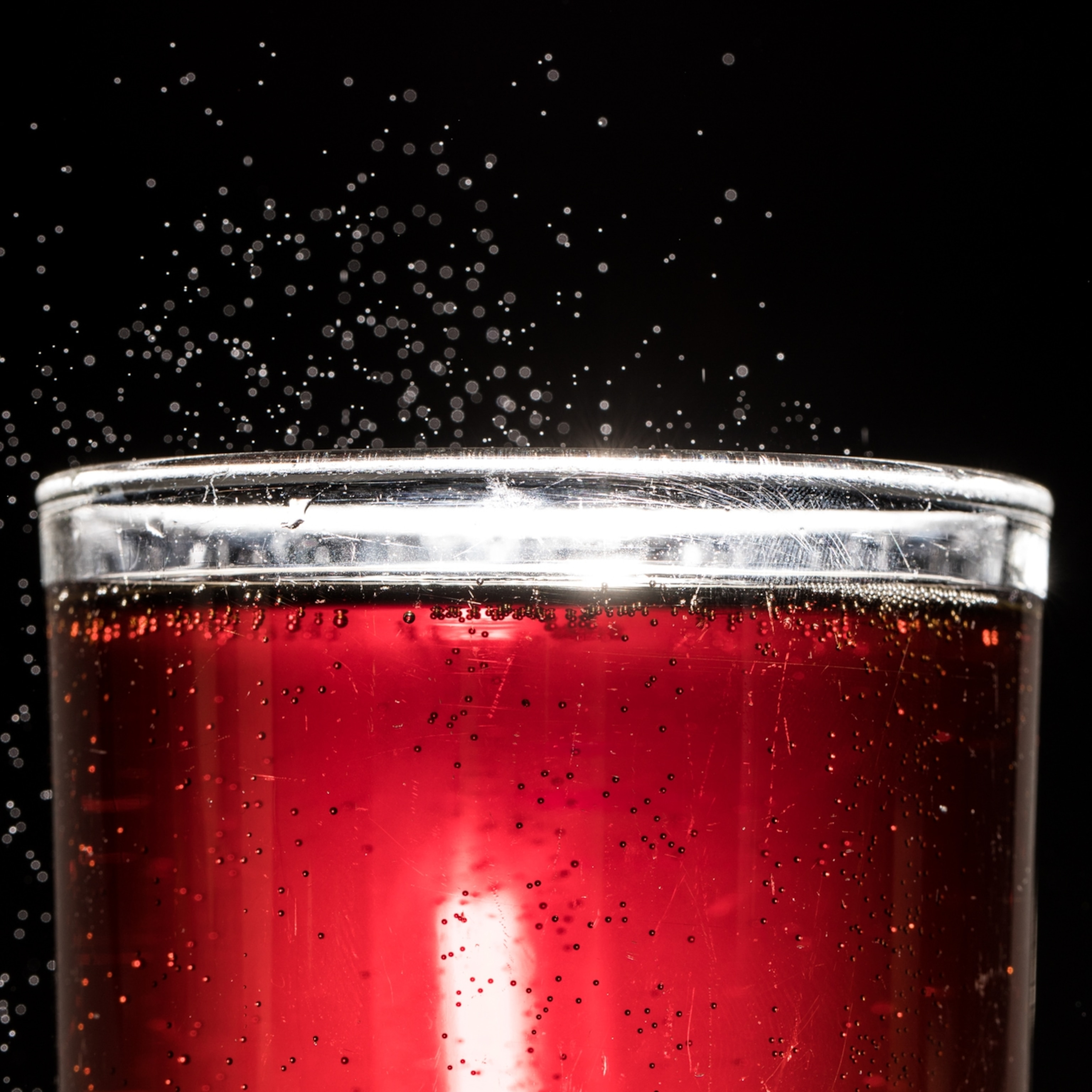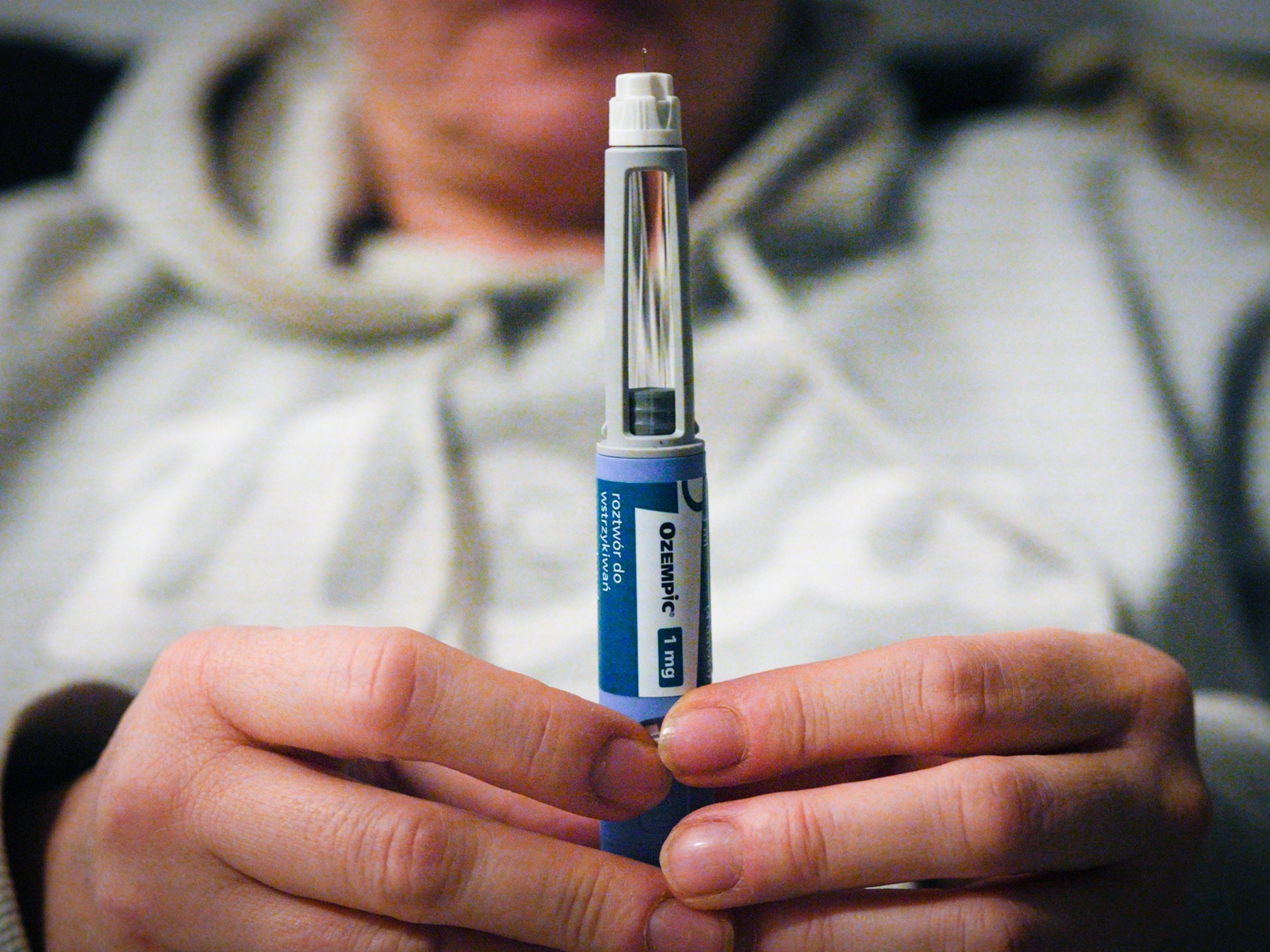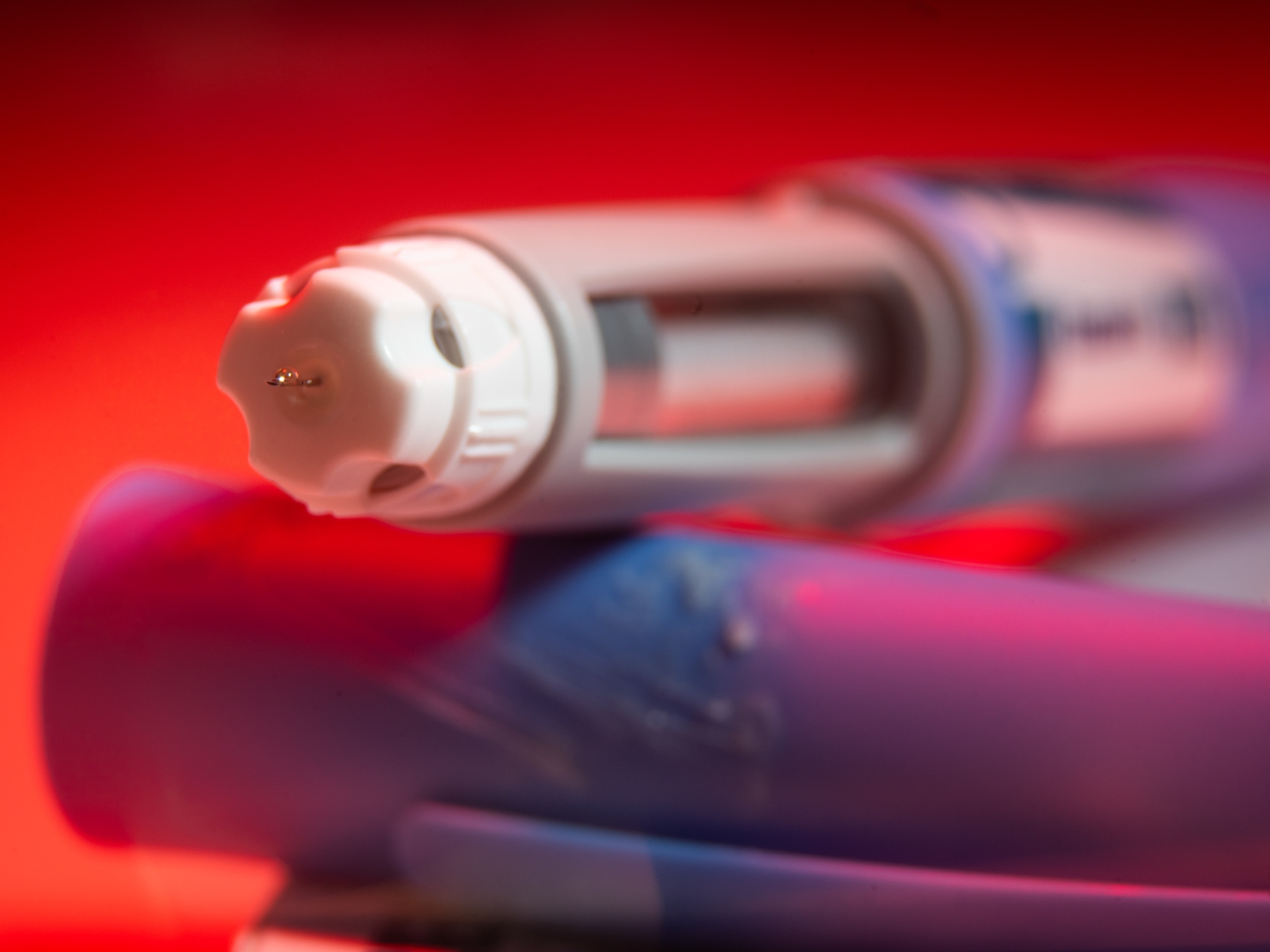Ozempic has a surprising side effect: Drinking less alcohol
People taking new weight-loss drugs say they curb cravings for booze, drugs, and nicotine. Did scientists inadvertently create an addiction-busting drug?
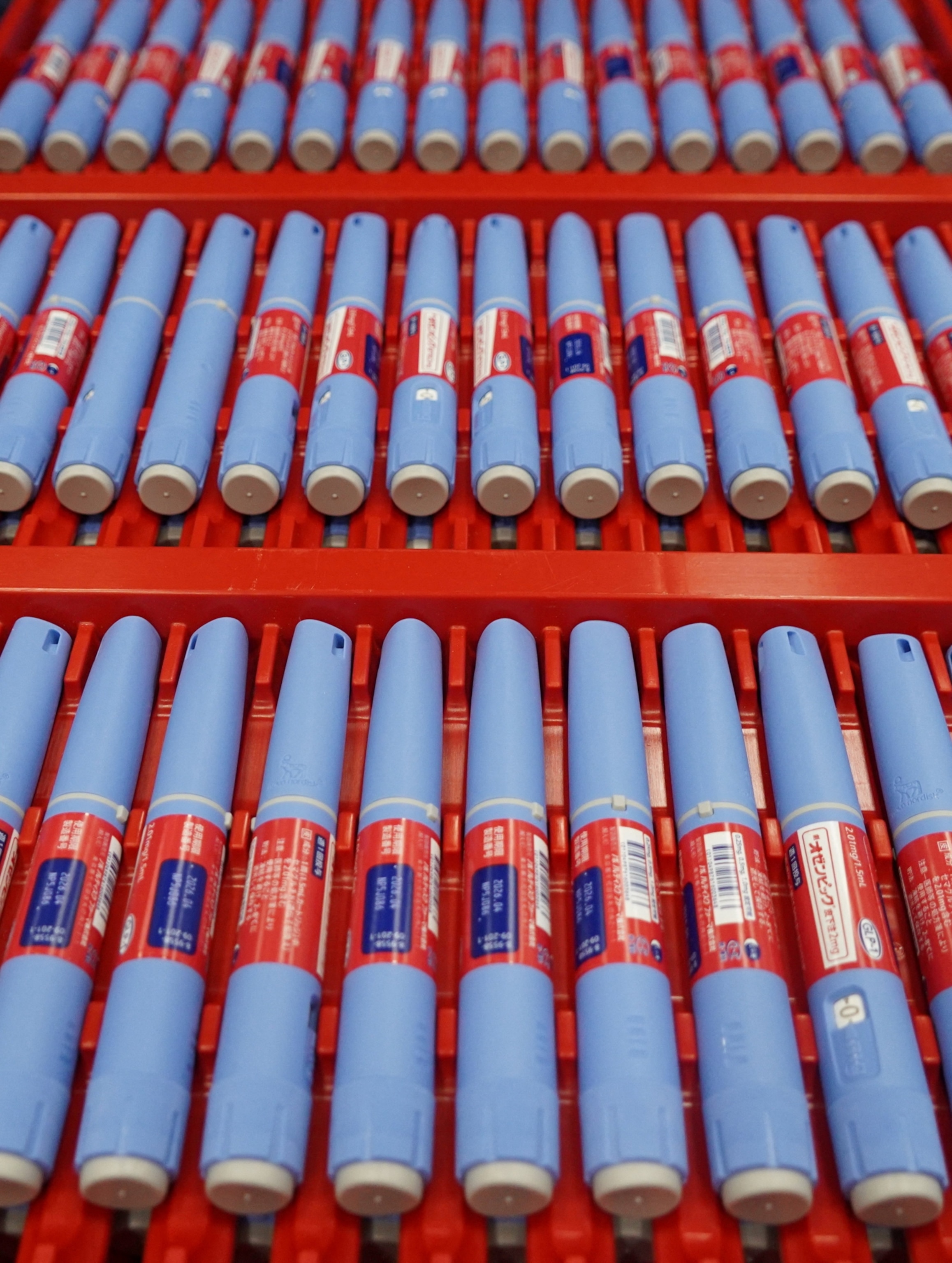
Shannon Hinderberger was just hoping to lose some weight when she began taking a GLP-1 receptor agonist drug in August of 2022. And over the course of 14 months, she did lose more than 60 pounds. But she ended up with a surprising result: She lost her desire for alcohol.
“Looking back, I was mildly dependent on alcohol to self-medicate for stress—I’d crave a glass of wine when I got home from work and I’d consume three-quarters of a bottle at a time, four times per week,” says Hinderberger, 49, a mother of two and a marketing consultant in Bend, Oregon. Now, the taste of alcohol no longer appeals to her. “It was a totally welcome side effect,” she says.
(When you go sober for even a month, your body will change. Here's how.)
Side effects of drugs are typically considered a bad thing. But there are exceptions. Consider the seemingly miraculous glucagon-like peptide 1 agonist (GLP-1) drugs like Ozempic and Wegovy (semaglutide): They have helped countless people achieve dramatic weight loss, while curbing their hunger and interest in food. That was the drugs’ intended purpose but unexpected results are also being reported: Many people say their interest in drinking alcohol, smoking, or using recreational or illicit drugs diminished while they were using a GLP-1.
Now scientific evidence is mounting in support of these reports. In a study in the May 2024 issue of Nature Communications, researchers examined electronic health records from 83,825 people with obesity and found that those using semaglutide had more than a 50 percent lower risk of alcohol use disorder over a 12-month follow-up period; people taking other weight-loss drugs, such as naltrexone or topiramate, didn’t experience the same effect.
Another study in the August 2024 issue of eClinical Medicine found that semaglutide use for type 2 diabetes was associated with reduced nicotine overuse. And a new study in the journal Addiction found that people with an alcohol use disorder had a 50 percent lower rate of drinking to the point of intoxication if they were taking a GLP-1 receptor agonist. Similarly, those with an opioid use disorder had a 40 percent lower rate of overdose while taking these drugs.
If further research supports these effects on substance overuse, these drugs could revolutionize the treatment of addiction, experts say.
Some people aren’t waiting for that to happen. As more people learn about the unexpected side effects of these drugs, some have begun to seek them out specifically to help with drinking or other substance use issues. But it’s important to remember that these medications are not yet approved for substance use disorders, says Patricia “Sue” Grigson, a behavioral neuroscientist and professor and chair of the neural and behavioral sciences at the Penn State College of Medicine.
Why does Ozempic curb alcohol cravings?
How can drugs that are designed to help people lose weight help with substance use challenges? That’s of course the million-dollar question, and the answer isn’t fully understood.
This much is known: “GLP-1 agonists influence dopamine pathways in the brain, particularly within the reward system,” says Fares Qeadan, co-author of the study in Addiction and an associate professor of biostatistics at the Loyola University Chicago Parkinson School of Health Sciences and Public Health. “By modulating these pathways, GLP-1 agonists seem to dampen cravings and reduce the reinforcing effects of addictive substances.”
(The unexpected health benefits of Ozempic and Moujaro.)
But the effects on dopamine signaling may not be the whole story, experts say. “In addition, it is possible that the mechanisms related to satiety with food may relate to alcohol as well,” says Lorenzo Leggio, a physician-scientist at the U.S. National Institutes of Health and clinical director at the National Institute on Drug Abuse. In other words, these drugs may reduce the amount of food or alcohol it takes for someone to feel satisfied.
The theory is that these effects would occur regardless of whether the substance is alcohol, drugs, or nicotine.
In addition, “the GLP-1 agonists may make some drugs more aversive or unpleasant,” says Luba Yammine, an associate professor of psychiatry at UTHealth Houston who is currently the principal investigator of a clinical trial evaluating a GLP-1 agonist as a potential treatment for smoking cessation and post-cessation weight management. “For example, the person may get nauseated while smoking.”
In a previous study, Yammine and her colleagues examined the effects of an extended-release GLP-1 agonist, along with nicotine replacement therapy, in helping people who had prediabetes or were overweight quit smoking. The participants were randomized to receive a placebo or the drug, in addition to the nicotine patch. After six weeks of treatment, those who received the GLP-1 drug were more likely to abstain from smoking and experience fewer craving and withdrawal symptoms.
The biggest questions scientists are asking
So far, the results of studies in animals on the use of GLP-1 drugs for substance use are very encouraging and the early data in humans is also positive, says Kyle Simmons, a neuroscientist and professor in the department of pharmacology and physiology and the director of Oklahoma State University's Biomedical Imaging Center.
“But we don’t have the gold standard randomized, controlled trials to say with confidence that this is a safe and efficacious medication for alcohol use disorder,” says Simmons.
In addition to the issue of efficacy, other questions remain. “We have a lot to learn about which formulation and which regimen will work best for which substance and which individual,” says Grigson.
(8 things we've learned about how alcohol harms the body.)
Experts like Leggio also want to gain insights into how these drugs affect brain circuitry when someone is faced with temptation. Clinical trials to investigate these issues and others are underway at the National Institutes of Health and other medical institutions.
(It’s also too soon to know what role these drugs could play for people who don’t have a diagnosed substance use disorder but do want to cut back on drinking or smoking.)
In the meantime, there are three FDA-approved medications to treat alcohol use disorder. “There are many people who could benefit from these medications but aren’t receiving them,” Simmons. The same is true of medications to help people kick opioid or nicotine dependence. Right now, experts recommend turning to these first.
Treating both weight loss and addiction
Even though it’s too early for the GLP-1 medications to be used on a widespread basis for substance use problems, there are exceptions. “These medications are used clinically for the treatment of diabetes or for weight management,” Yammine says. “So if someone is taking a GLP-1 agonist for diabetes or weight management and they have co-occurring substance use issues, they may be helped by these medications.”
Steven Klein, an addiction medicine fellow at the Caron Treatment Centers’ residential treatment facility in Pennsylvania, prescribes these drugs to patients for this dual purpose.
“My personal experience has really molded my professional practice,” says Klein, who got sober from alcohol and drug use in 2016. During his subsequent medical residency, he gained 40 pounds. “I always struggled with my weight and I turned to food to deal with the stress of the pandemic—I used food in the same way I used drugs and alcohol,” he says.
(Can't stop thinking about your next meal? That's food noise.)
In 2022, Klein started taking Mounjaro and lost 40 pounds. What’s more, the drug reinforced his sobriety. “I haven’t had a craving for alcohol or drugs in years,” says Klein. “It’s been transformative.” He sees a similar effect in patients to whom he prescribes drugs for concurrent obesity and substance abuse. “What I hear from people taking the GLP-1 drugs is they can feel their bodies change—their cravings for food and substances decrease,” says Klein.
“As an addiction medicine provider,” Klein adds, “I think of addiction as a record playing—our job is to lift the needle off the record long enough to teach them a different song.” So far, he says, the GLP-1 drugs seem to be having that effect, at least anecdotally.
Michael Cupps discovered that firsthand. In 2023, the father of two from Dallas told his doctor he wanted to stop drinking. “I had been questioning my relationship with alcohol for some time—it was my way of coping with stress,” says Cupps, 58, who works in the software industry. Because his doctor wanted him to drop some weight, she suggested that he try semaglutide. After Cupps started taking it, alcohol lost its pull on him. Eventually Cupps stopped drinking entirely and started going for walks to relieve stress. He also lost 20 pounds.
The future of addiction treatment?
With the benefit of further research, especially randomized, controlled trials, experts are hoping the GLP-1 drugs will broaden their arsenal of weapons against addiction.
“If it turns out these GLP-1 medications are effective for treating alcohol use disorder, right out of the gate they will become the most widely used medication for addiction treatment,” predicts Simmons.
Simmons sees the potential for GLP-1 drugs to treat addiction as being similar to the way SSRI antidepressants like Prozac became a major breakthrough for depression in the 1990s.
“That Prozac moment radically changed how we treat depression and how people see depression,” Simmons says. “It helped people see depression as a biological process, which reduced the stigma. Addiction is also a biological process. We may be on the verge of having a semaglutide moment for addiction—and that’s got to be a good thing.”


